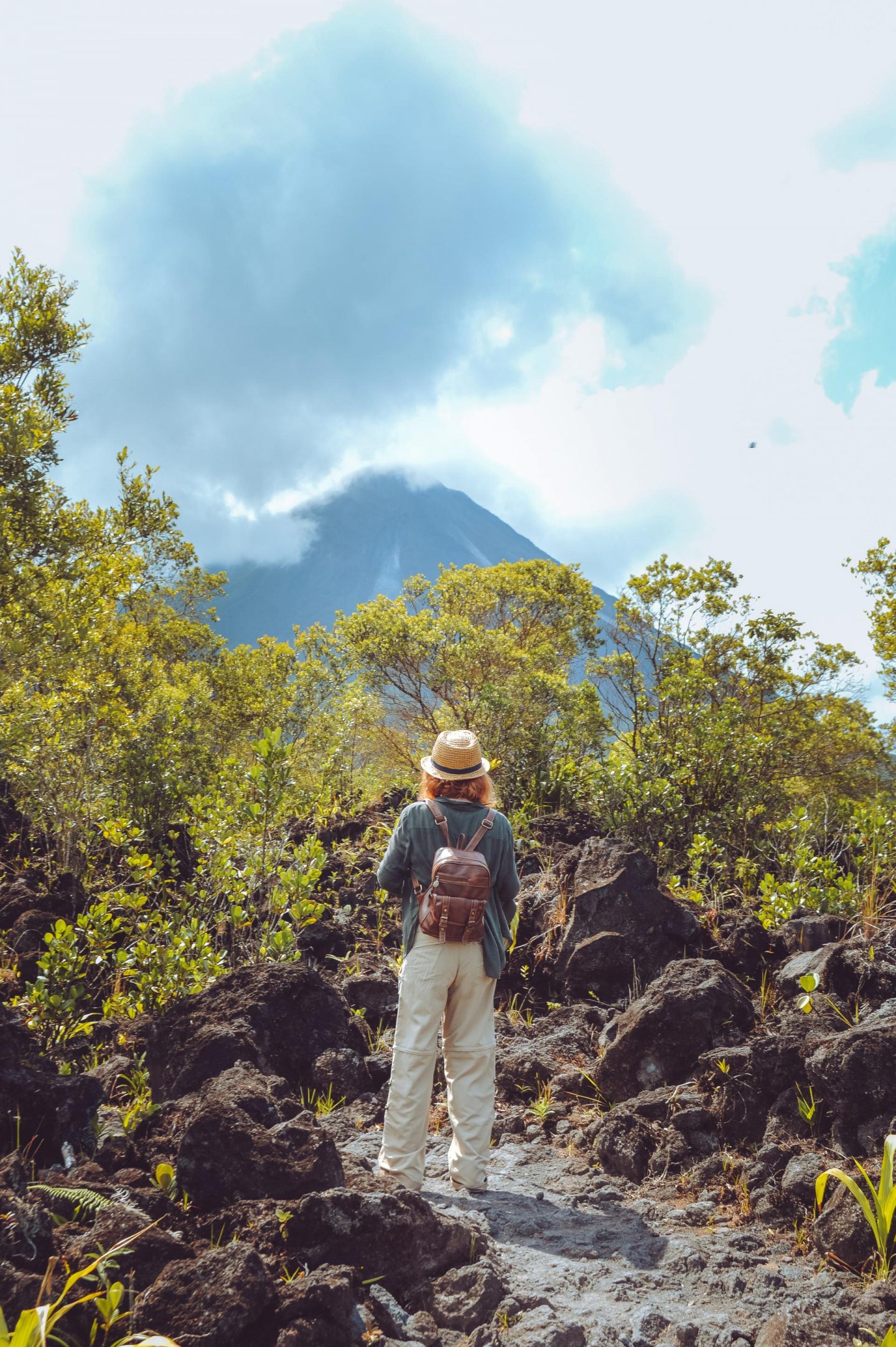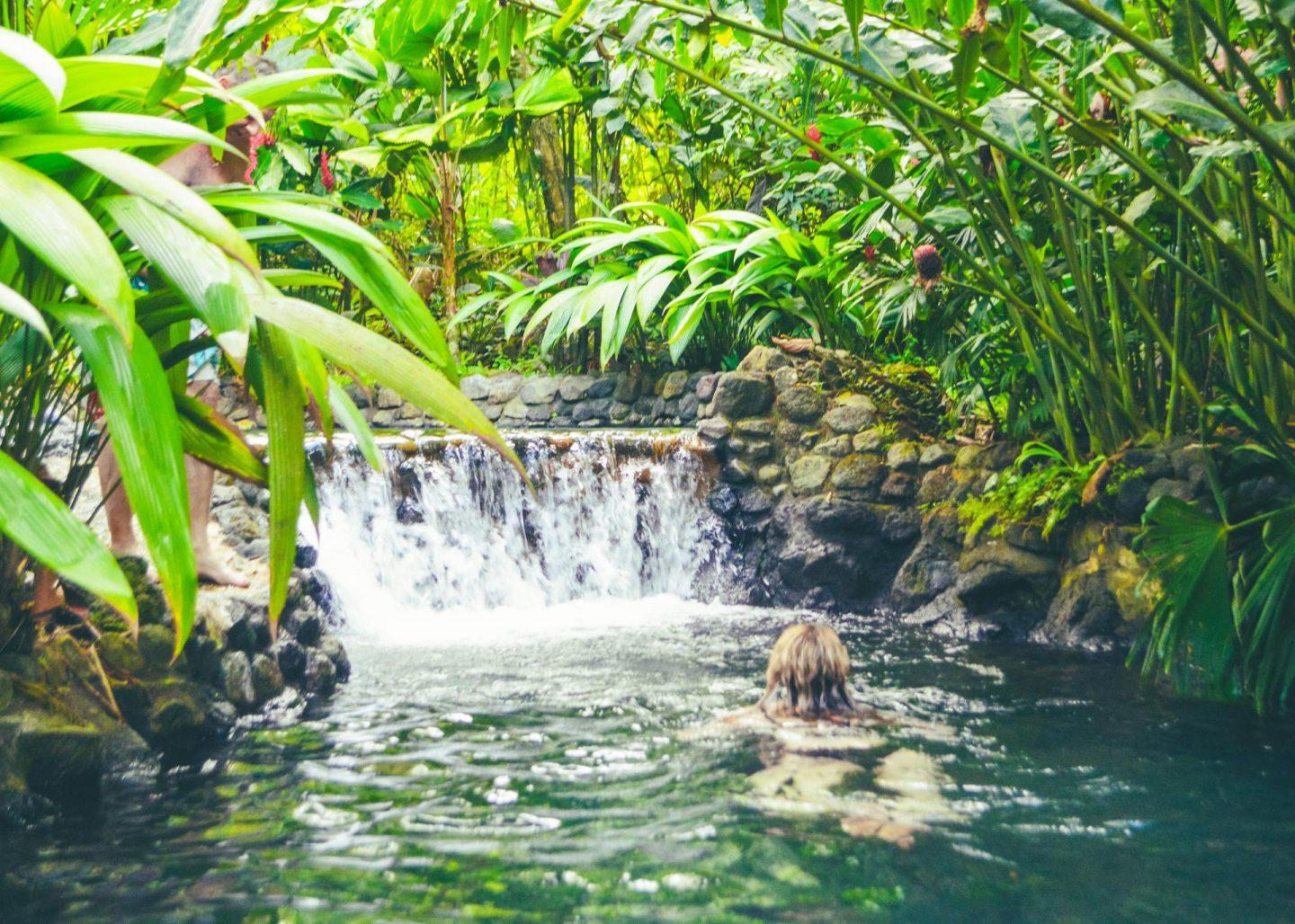
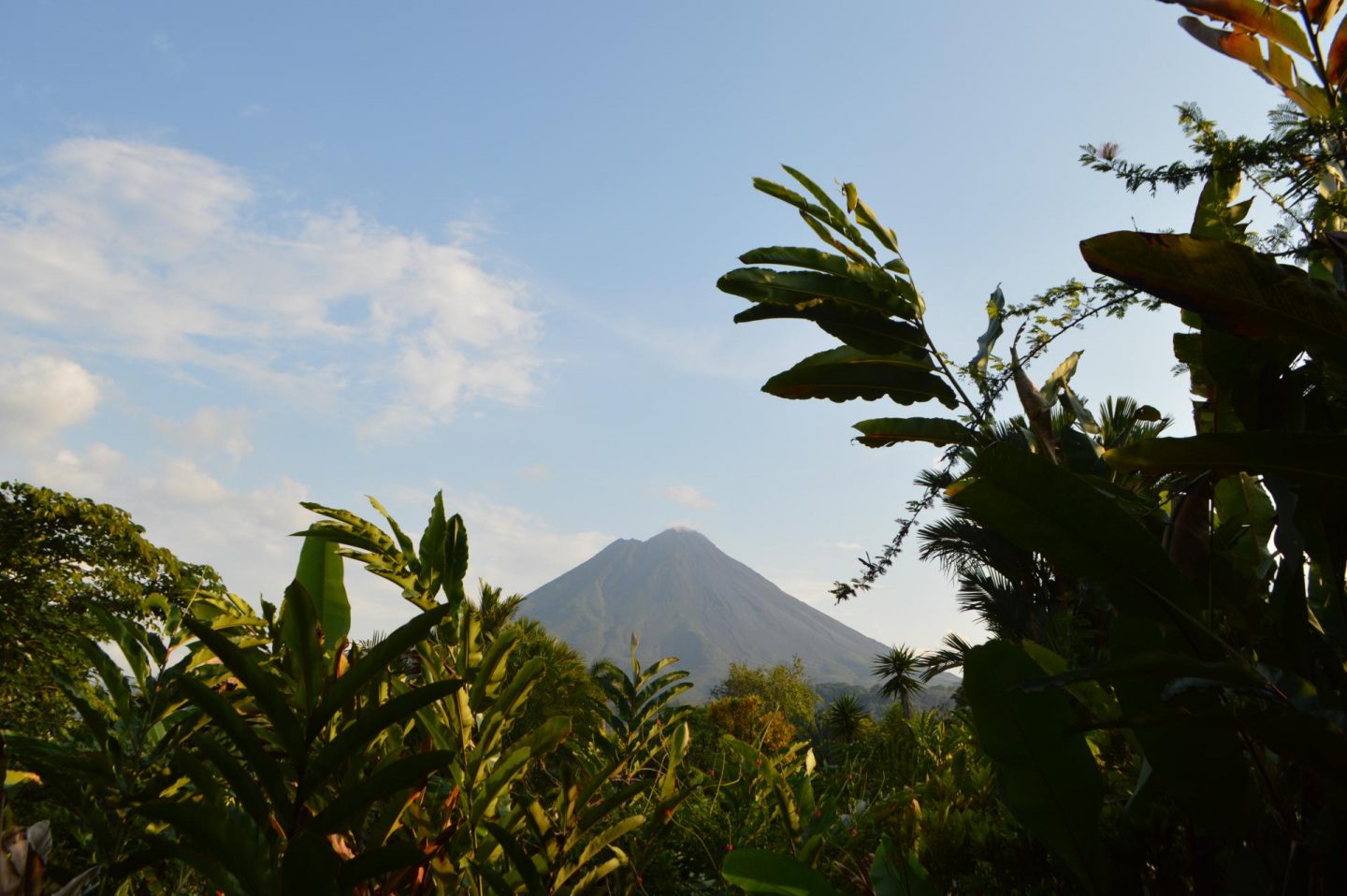
Pura Vida: chilled-out travels through Costa Rica
I’m sitting in the prow of a little fishing boat and the night sky above me is sprinkled with stars. Rapidly disappearing on the horizon is the jungle-fringed coastline of Curu Wildlife Refuge. When we reach deep water the boat’s captain kills the engine and reaches his hand into the inky black ocean. Sudden bright sparks flash like fire at the tips of his fingers. It’s bioluminescence, brighter than I’ve ever seen it before. Without further ado I jump in, my body lighting up the ocean around me, my extremities radiating light underwater and mirroring the bright stars above me. The captain gives me a hand as I clamber back into the boat and grins at my happy, astonished face. “Pura vida”, he smiles back.
Pura vida – translatable as ‘the pure life’, ‘the simple life’ – has become inextricably linked with Costa Rica, but the phrase is more than a tourist board gimmick. It’s a philosophy, a way of life, even a commonly used expression to mean hello, goodbye, it’s all good. In this small, lush Central American country they take the simple things seriously. It seems to work, too – Costa Rica is one of the safest, best educated and greenest countries in Latin America, and is home to some of the world’s longest living people, too – on the Nicoya Peninsula locals frequently live well past 100. I’m on a mission to find out the secrets of the pura vida, and perhaps take a little of it home with me.
Costa Rica is a country of two halves, cleaved north to south by mountains and with the Pacific on one side and the tropical Caribbean ocean on the other. Eden-like, it’s home to fertile green valleys full of farms and fruit trees, high mountains flanked with cool cloud forests, natural hot springs and miles and miles of beautiful beaches where world-class surfing waves roll endlessly into the shore. Even better, it’s compact enough that you can criss-cross most of it in a few weeks.
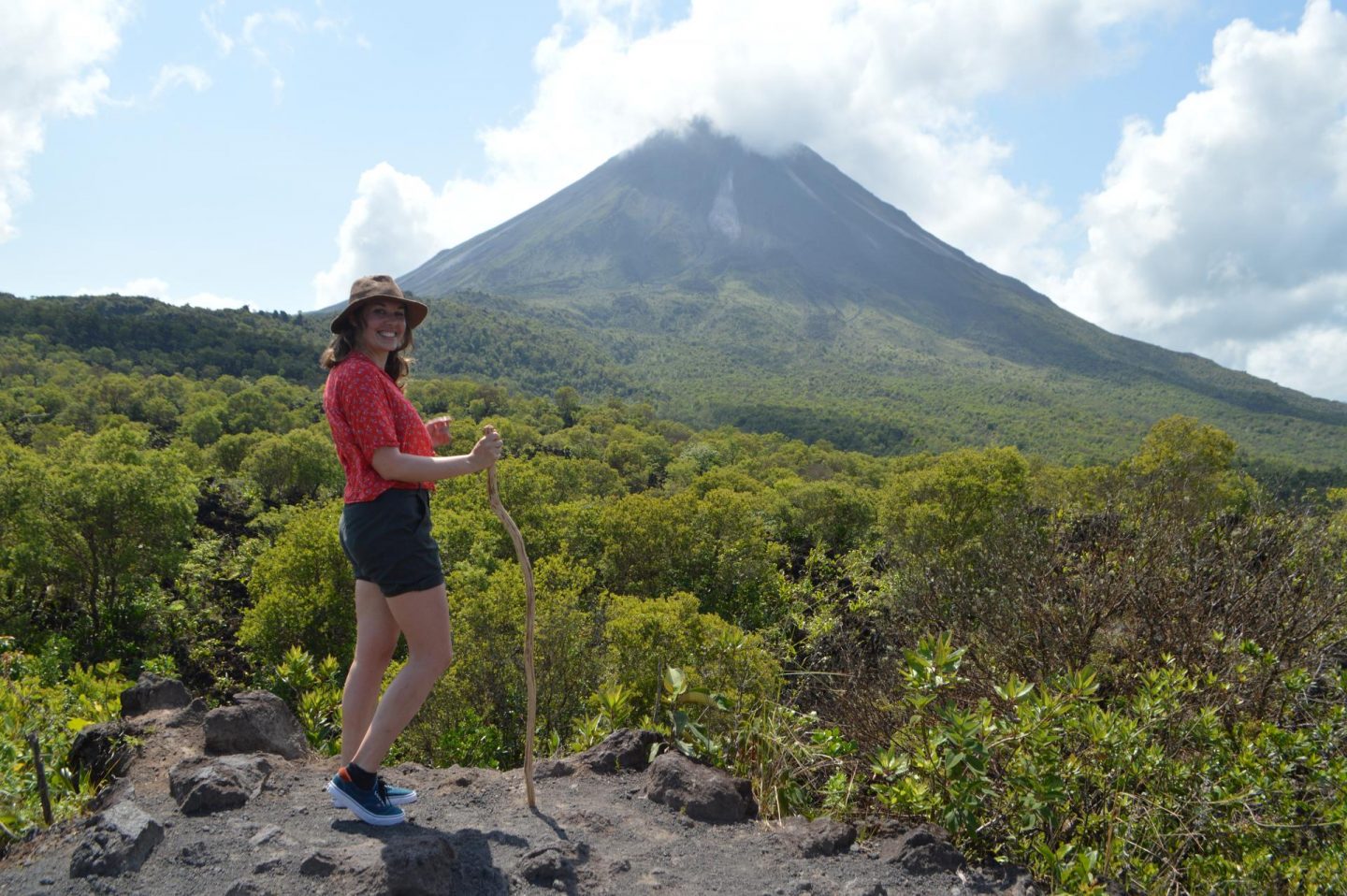
Green dreams: eco-friendly Costa Rica
The savvy locals know that their bountiful country is special – perhaps that’s way there’s such a big focus on green, earth-friendly living here. Places to stay often sport leaves instead of stars, showing off their eco credentials so that travellers can pick ethically sound hotels and hostels. Plastic is used as sparingly as possible, and there’s a big focus on using locally-sourced ingredients in food and even in skincare. I meet Maria Laura Quesada, the founder of Biosfera, who makes organic creams and lotions from her rural workshop. Her brand is carbon neutral, and visitors to the workshop even get to plant a fruit tree before they leave. “We take looking after our environment seriously in Costa Rica and value sustainable innovation. We live in an incredibly abundant country and I love being able to use things we grow ourselves in my products, such as chamomile and cucumber.”
Maria Laura’s products smell good enough to eat, but my favourite local treat is Costa Rican coffee. It’s impossible to road trip around without being tempted to stop at each roadside coffee plantation to try their brews and I fall in love with Café Tres Generaciones, just outside San Jose, where rows of bright coffee bushes are fringed by wildflowers that are a haven for butterflies.
Farming paradise
In search of more good things to eat I head to Finca Don Juan in Fortuna, an eco farm sat in the Toblerone-shaped shadow of Costa Rica’s iconic dormant volcano, Arenal. Here farmers in sunhats show us how to harvest pineapples, point out the rainbow of tropical flowers they grow and help us to decide what to harvest for a farm-to-table lunch from rows of huge lettuces and vines drooping with ripe red tomatoes. ‘Try this!’ says Juan, handing us a bright red berry and smiling mischievously. It’s synsepalum dulcificum, the ‘miracle berry’ – we chew it and then try biting into a lemon. Its citrussy sourness miraculously tastes deliciously sweet, our tastebuds tricked by the berries.

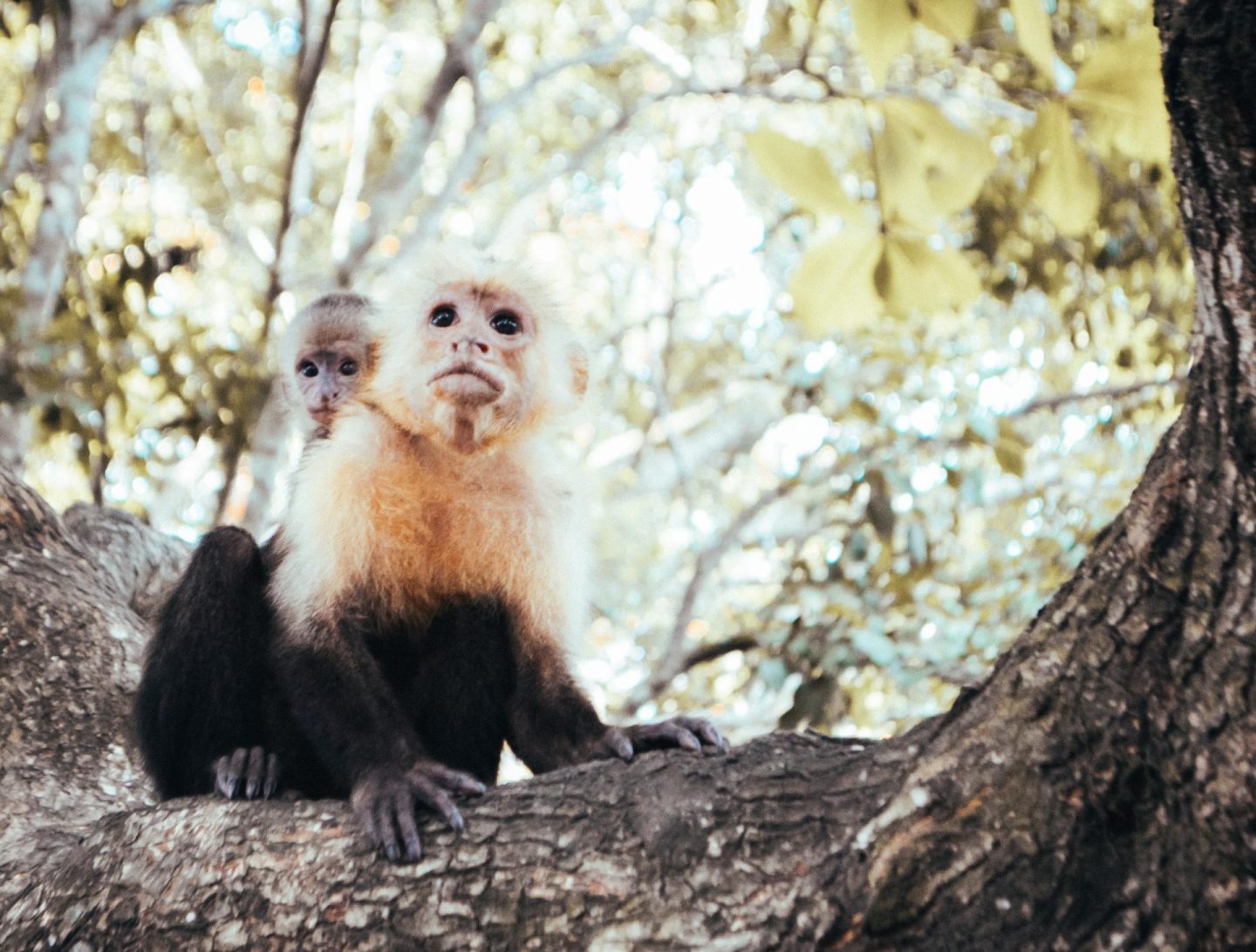
Traditional methods of farming and production are being revived in Costa Rica, but there are some parts of the country where they never left. In the Matambu indigenous reserve on the Nicoya Peninsula a community of Chorotega people still follow the old ways. Ezekiel Aguirre Perez, a potter, a storyteller and a member of the indigenous council, takes us on a ramble along an ancient woodland trail and then sits down at his wheel to show us how his family have made clay pots for centuries. I ask him about pura vida and if he knows the secret to the Nicoyan’s long, happy lives. “We get a lot of sleep. We eat good fresh food. And we have strong family connections”, he says, his baby grandson toddling around the potter’s wheel as he effortlessly spins a beautiful, simple pot.
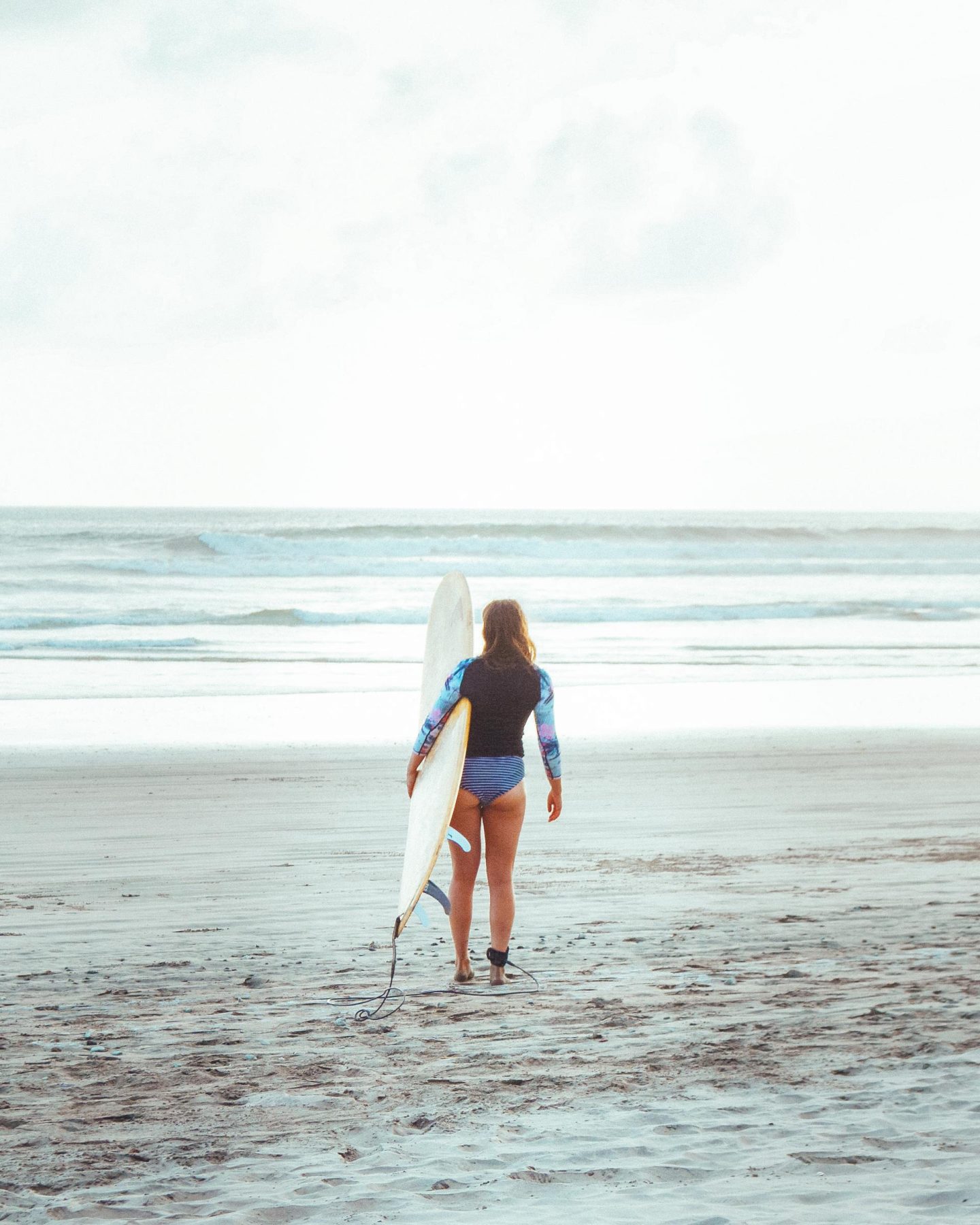
Where to sample Costa Rica’s surf culture
The traditional wooden huts and forest trails of the reserve may be in contrast to the modern, cosmopolitan vibe of Costa Rica’s coast, but life here is just as laid back. Miles of white sand tinged pink at sunset and big, punchy but deliciously warm waves make Costa Rica a surfer’s mecca, and the Harmony Hotel on Guiones beaches is the perfect base for some aqua therapy. After a yoga session to loosen my limbs I borrow a hefty wooden longboard from Harmony’s quiver of surfboards and paddle out, watching local wave-chasers pop up against the golden setting sun and catching a wave of my own back towards the palm trees on the shore.
The next evening is my last and as our little fishing boat speeds back to shore it sends sparks of bioluminescence shooting away from it like a magic spell. Night swimming beneath the stars is a simple, achievable and natural pleasure, like so much of the good stuff in Costa Rica. Perhaps that will be my piece of the pura vida to take away – a new appreciation for slow, simple earth-loving living.
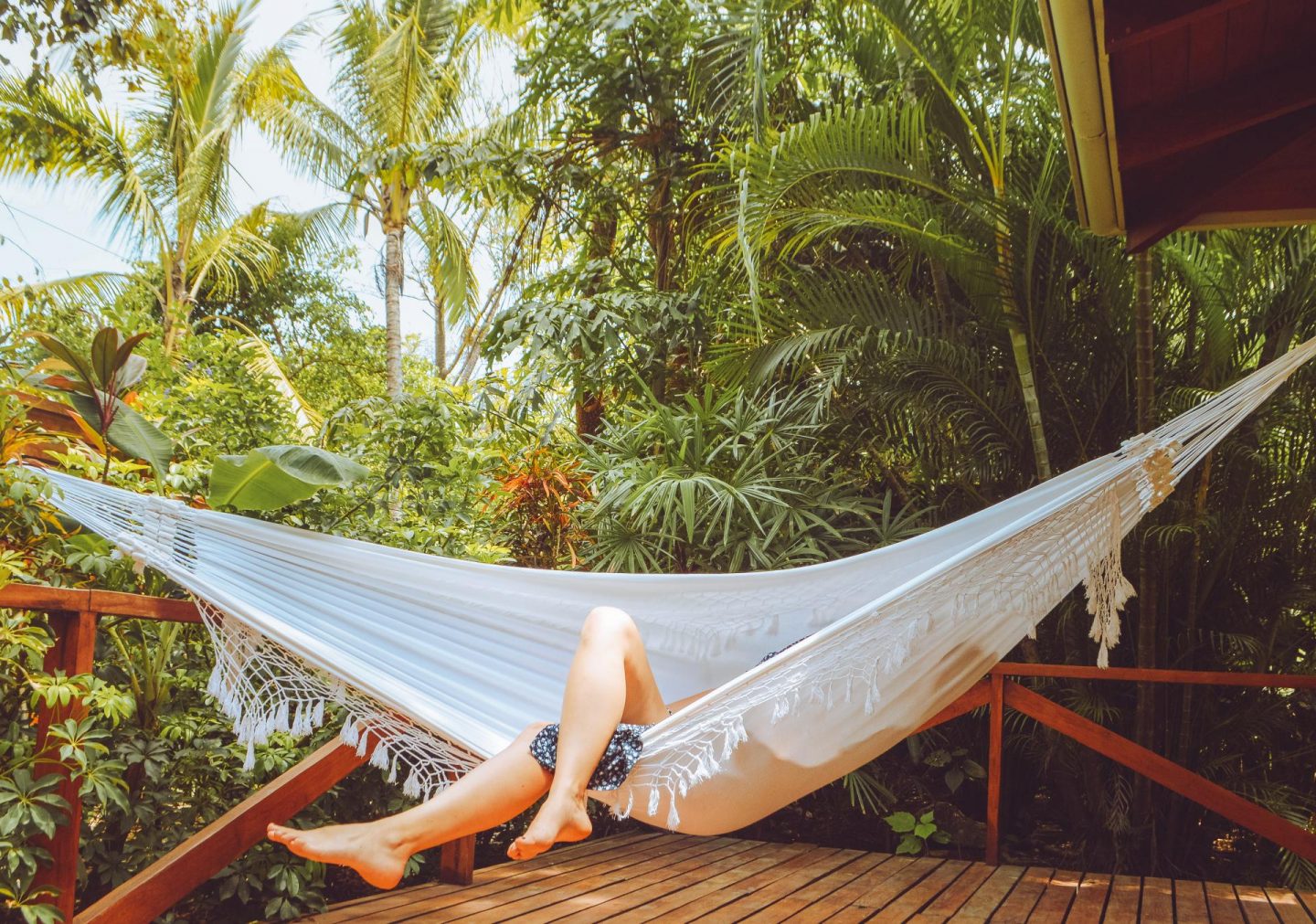
Where to stay in Costa Rica
Harmony Hotel: It’s all about the good life at this relaxed beachfront eco-hotel in Nosara, loved by surfers and stylistas alike. Motel-like rooms are airy and bright and have palm tree-flanked verandahs strung with hammocks. Start the morning with a yoga lesson in the lovely Harmony shala, borrow a surfboard and head to the beach for the day and then toast the sunset with a home-grown cocktail – it’s tempting to never leave.
Rooms from £190 per night
Grano de Oro: A chilled-out sanctuary in the heart of the busy capital, San Jose, this wood-panelled beauty of a hotel was once a Victorian mansion and has old-fashioned, comfy rooms that feel like they haven’t changed much in the meantime. We love the shady garden patios and retro mirror-panelled bar.
Rooms from £134 per night
Tabacon: Okay, so it’s a splurge, but you’ll never feel more like you’re starring in a tropical James Bond scene than at this smart hotel’s private hot springs, where gorgeous waterfalls of naturally warm water cascade into secret pools linked by jungle gardens and hidden chill-out spots. Day passes are also available for £65 – the perfect way to chill out after a few days of hiking or surfing.
Rooms from £249
